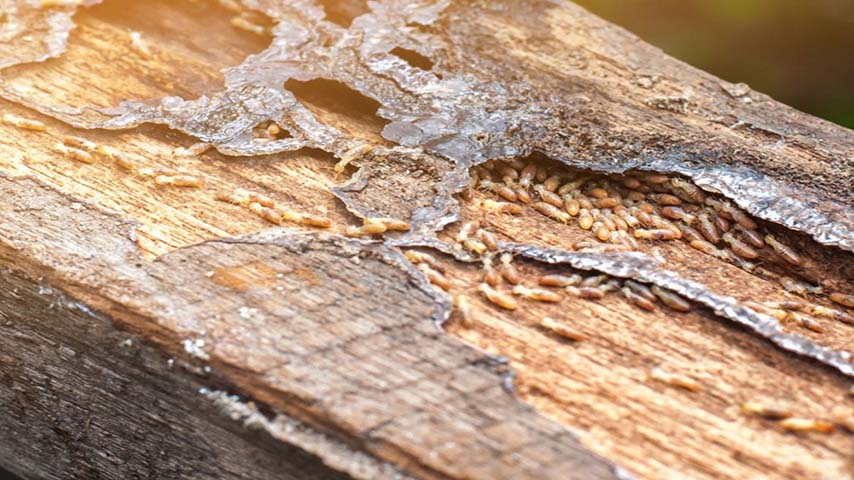Termites are often referred to as “silent destroyers” because they can cause significant damage to homes and structures without obvious signs until it’s too late. These tiny pests feed on cellulose found in wood and other materials, leading to severe structural damage if not addressed promptly. Understanding termite damage repair is crucial for homeowners to safeguard their property from these destructive insects. This guide will cover everything from identifying termite damage to effective repair methods and preventive measures.
Identifying Termite Damage
The first step in termite damage repair is recognizing the signs of infestation. Termites are particularly attracted to wood, but they can also damage paper, fabric, and other cellulose-containing materials. Here are some common indicators of termite damage:
Wood Damage: Termites often create hollow tunnels within wood, which can be detected by tapping on wooden surfaces. If the wood sounds hollow, it might be infested. Additionally, you might find small holes or frass (termite droppings) near affected areas.
Swarmers: Winged termites, known as swarmers, often emerge in large numbers during mating season. Seeing swarmers inside or near your home is a strong indication of an infestation.
Mud Tubes: Subterranean termites build mud tubes to travel from their nests to their food sources. These tubes are typically found along foundation walls, basement walls, or wooden beams.
Buckling Wood: Wood that appears warped or buckled could be a sign of termite damage, particularly if it has been consistently damp or exposed to high humidity.
Visible Damage: In severe cases, termites might cause visible damage such as sagging floors, ceilings, or walls. If you notice any of these issues, it’s essential to inspect for termite activity.
Assessing the Extent of Damage
Once termite activity is confirmed, assessing the extent of the damage is crucial for determining the appropriate repair methods. This assessment usually involves:
Inspection: Hire a professional pest control technician to perform a thorough inspection. They will examine the extent of damage, locate nests, and identify any additional infestations.
Damage Evaluation: Evaluate the extent of damage to wooden structures, including beams, joists, and other load-bearing elements. This may involve visual inspections, tapping, or using specialized equipment like moisture meters and infrared cameras.
Structural Integrity: For severe infestations, structural engineers may be required to assess the integrity of the affected structures and recommend necessary repairs or reinforcements.
Repairing Termite Damage
Repairing termite damage involves a combination of pest control measures and structural repairs. Here’s a step-by-step guide to addressing the damage:
Termite Treatment: Before any repairs can be made, it’s crucial to address the termite infestation. This usually involves:
Chemical Treatments: Termiticides are applied to the soil around the foundation or directly to the infested wood. These chemicals kill termites and prevent future infestations.
Bait Systems: Bait stations containing slow-acting insecticides are placed around the property to attract and eliminate termites.
Physical Barriers: Installing physical barriers such as metal shields or sand barriers can help prevent termites from accessing the building.
Removing Damaged Wood: Once the infestation is under control, remove and replace any wood that has been significantly damaged. This includes:
Cutting Out Infested Wood: Carefully cut out and dispose of any wood that is beyond repair. Ensure that all damaged areas are thoroughly inspected to prevent leaving behind any hidden termites.
Replacing Wood: Install new, treated wood that is resistant to termites. Ensure that the new wood is properly fitted and secured to maintain structural integrity.
Reinforcing Structures: In cases where structural elements have been compromised, additional reinforcement may be necessary:
Patching and Reinforcement: Use wood patches or reinforcements to strengthen weakened beams or joists. For significant damage, consider adding additional supports or replacing entire structural components.
Foundation Repair: If termites have damaged the foundation, it may need to be repaired or reinforced to ensure stability. This might involve lifting and releveling the foundation or repairing cracks and gaps.
Treating Wood: After replacing damaged wood, treat the new wood with a termiticide or wood preservative to protect it from future infestations. This treatment can be applied as a preventive measure to safeguard against future termite damage.
Moisture Control: Termites are attracted to moisture, so addressing any moisture issues is crucial:
Repair Leaks: Fix any leaks in plumbing, roofs, or windows to prevent water from seeping into wooden structures.
Improve Ventilation: Ensure proper ventilation in crawl spaces and basements to reduce humidity levels and discourage termite activity.
Use Dehumidifiers: In areas with high humidity, use dehumidifiers to maintain a dry environment.
Preventing Future Infestations
Preventing future termite infestations is essential for protecting your property. Here are some proactive measures to take:
Regular Inspections: Schedule regular inspections by a professional pest control service to monitor for any signs of termite activity. Early detection is key to preventing extensive damage.
Maintain a Barrier: Install and maintain physical barriers around your property to deter termites from gaining access. This can include metal shields, sand barriers, or treated wood.
Keep Wood Dry: Ensure that all wooden structures are kept dry and free of moisture. Address any leaks or drainage issues promptly.
Landscaping Practices: Avoid placing mulch or wood chips close to the foundation of your home. Keep vegetation and wood piles away from the foundation to minimize termite attraction.
Seal Entry Points: Seal any cracks or gaps in the foundation, walls, or roof to prevent termites from entering your home.
Conclusion
Termite damage repair is a complex process that requires a comprehensive approach to ensure effective treatment and prevention. Identifying the signs of termite activity, assessing the extent of damage, and implementing appropriate repair and preventive measures are crucial steps in protecting your property from these destructive pests. By taking proactive measures and addressing any issues promptly, you can safeguard your home from the risks associated with termite infestations and ensure long-term structural integrity.



